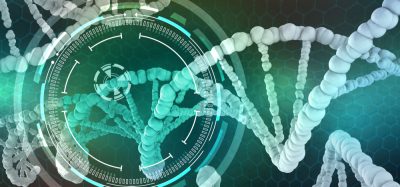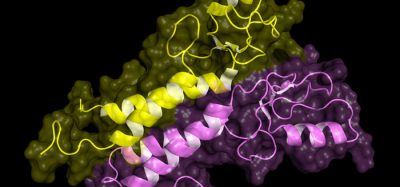Novel gene therapy offers potential treatment for FCMD
Posted: 13 December 2022 | Izzy Wood (Drug Target Review) | No comments yet
Japanese researchers proposed using RNA interference for correcting a mistake in the genetic code of patients with Fukuyama Muscular Dystrophy (FCMD).

Using RNA interference, Japanese researchers from the Department of Clinical Genetics at Fujita Health University Hospital, restored the normal biological function of “fukutin” (FKTN) gene in patient-derived cells, offering hope for therapy.
Fukuyama congenital muscular dystrophy (FCMD) is the second most common form of childhood muscular dystrophy in Japan. The disease manifests itself in the form of a severe neuromuscular disorder. One form of FCMD is caused by a genetic abnormality in the FKTN gene. The genetic anomaly blocks the chemical glycosylation of a biologically important protein.
The findings, published in Human Molecular Genetics, used the experimental technique called exon skipping by antisense oligonucleotides. The team corrected a mistake in the FKTN gene that blocks the chemical glycosylation of a biologically important protein. Thus, the team designed specific antisense oligonucleotides—small pieces of DNA or RNA that can bind to specific RNA molecules.
The researchers then conducted experiments on patient-derived cells using these antisense oligonucleotides.
Dr Mariko Taniguchi-Ikeda, an Associate Professor in the Department of Clinical Genetics at Fujita Health University Hospital explained, “The goal of our research was to find a cure for this intractable disease. Our previous studies show that patients who carry retrotransposal insertion can be treated by introducing antisense oligonucleotides. Clinical trials are currently underway. However, no therapeutic methods are available for patients carrying a deep-intronic heterozygous variant. Our findings suggest that exon skipping by antisense oligonucleotides as a treatment for patients with the deep-intronic variant has tremendous potential.”
The FKTN gene is responsible for the production of “ribitol-phosphate transferase”—an enzyme that chemically transfers a glycosyl group to alpha-dystroglycan (α-DG). α-DG is a key protein present in the cytoskeleton, a large network of protein filaments and tubules that gives shape and coherence to living cells.
The genetic abnormality in the FKTN gene prevents it from expressing a fully functional form of ribitol-phosphate transferase. This reduced functionality blocks a critical process in the biological relay—the glycosylation of α-DG. Glycosylation, or the attachment of sugar molecules to non-sugar moieties like lipids and proteins, such as α-DG in this case, is important to ensure the structural stability as well as functionality of these moieties.
The specifically designed antisense oligonucleotides, when introduced into patient-derived cells via RNAi, were able to skip the affected region of the gene, thus restoring normal production of the FKTN protein and subsequent glycosylation of α-DG.
Encouraged by their in vitro findings, the research team is now proposing translational work by setting up large-scale clinical trials involving patients with FCMD.
Lead author Sarantuya Enkhjargal, a PhD student at Fujita Health University Hospital concluded: “The US Food and Drug Administration has approved eight antisense oligonucleotides for the treatment of several diseases. Our findings are promising at the in vitro level. Further studies on the in vivo efficacy and safety in animal models will be needed before this approach is eventually used in clinical trials, however.”
Related topics
Disease Research, DNA, Drug Targets, Gene Therapy, In Vitro, Protein, RNAs, Targets, Therapeutics
Related conditions
Fukuyama congenital muscular dystrophy (FCMD)
Related organisations
Fujita Health University Hospital
Related people
Dr Mariko Taniguchi-Ikeda, Sarantuya Enkhjargal







